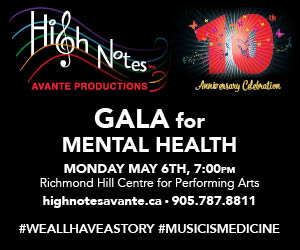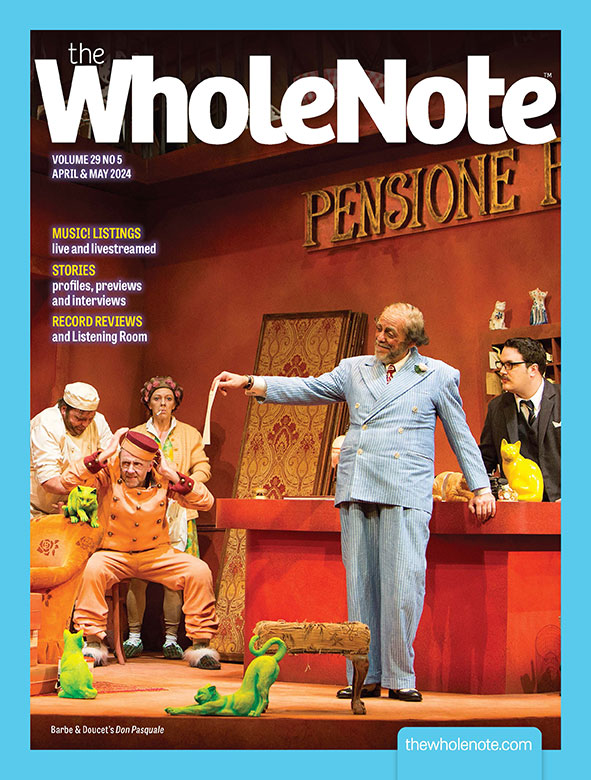Let’s Talk About Some Other Weather, Shall We?
There’s a great little anecdote in Paul Ennis’ Classical and Beyond column this issue. The composer Robert Schumann is pleading with a conductor, by name of Wilhelm Taubert, to try to get his charges to buy into the spirit of Schumann’s Symphony No.1 “Spring” in their playing. “If only you could breathe into your orchestra, when it plays, that longing for spring!” Schumann laments, and then goes into a long and detailed programmatic explanation of all the vernal twists and turns and nuances of the piece (which was written in the dead of winter). There’s an additional twist to the story, but I won’t spoil it.
All this is by way of preamble to the following: if you do as I say, not as I do, you should consider starting to plan right now for what you are going to do in the way of musical self-improvement this coming summer. That way you at least stand a chance of not finding yourself, as I chronically do, every September, wondering where the hell the summer went in terms of any kind of musical growth.
Opportunities for summer music education are not an automatic hot topic, if you’ll excuse the expression, while you are shovelling snow. Reality is, though, that lots of places have application deadlines, or a finite number of spots for applicants. So chances are if you wait till the weather feels summery as your cue, you might miss out on something. We’ve traditionally waited till our March issue to supply readers with information about summer music educational opportunities, but even March is too late for some. So this year we’ve made a spot in the February issue for camps and programs with early deadlines (there are four such profiles in this issue of the magazine, all with imminent deadlines). Better still, we’ve started posting camp and program profiles as we receive them – there were ten at the moment of writing this with more coming in all the time – so you don’t even have to wait till March. Just go to thewholenote.com/resources and start feeling warm and tingly all over.
And a happy new year to you too!
One of the great advantages of publishing a combined December/January issue, as we have always done, is not having to deal with the mandatory end of year stuff in the heat of the moment (if you’ll pardon the expression). You know, looking grimly back at the (good riddance) old year out of one side of my face, and determinedly cheerfully forward, out of the other side, at a year that has to be better than last year was.
This way, I get an extra month to warm to the task. So belatedly, dear reader, I wish you a musically fruitful 2019. If February’s calendar is any indication, there’s plenty out there for the picking.
Lydia Perović and David Jaeger will return
Two absentees, this month, from our usual writing corps. David Jaeger is fulfilling the commitment he made in the December issue – to head off to Winnipeg for a late January new music getaway, the 2019 Winnipeg Symphony Orchestra New Music Festival (WNMF). “The late Larry Lake, host of the CBC Radio 2 network new music series, Two New Hours, (1978–2007) called the WSO’s festival, ‘The greatest new music party in the Universe!’” Jaeger wrote. “What else is there to do when it’s -18C with windchill making it feel like -30C?” Toronto cynics might ask. Oh, wait. That’s today’s Toronto weather, as we dipsy-doodle in the polar vortex. So what are you waiting for, people? It’s time to party!
Lydia Perović’s Art of Song column will also return, in the spring (there’s that word again!). Places to go, books to write! That kind of thing. Meanwhile I said I’d look out for breaking news on her beat so, to break the ice, how about the news that internationally acclaimed Canadian soprano Adrianne Pieczonka has been appointed Vocal Chair and head of the vocal department of the Glenn Gould School (GGS) at the Royal Conservatory, the first such appointment in the school’s history?
And for those of you missing Perović’s pointers as to concerts of art song interest this issue, a friendly reminder that the “Just Ask” feature in our online listings enables you to select “solo voice” to filter the listings.
From GGS to GGF
Closer to 40 than 30 years after his death, Glenn Gould’s name is a permanent fixture in this magazine, as witness the passing reference to the GGS in the previous paragraph, and to the GGF, in our cover story starting on the next page. There’s another passing, but pointed, reference to Gould that I want to call your attention to though, in this issue: in Robert Harris’s Rear View Mirror on page 86. Genius, as Harris explains, comes in different forms.
publisher@thewholenote.com




